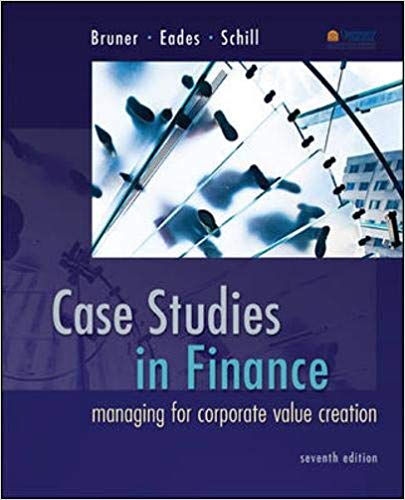1. What is the problem facing Purinex, Inc.s CFO Gilad Harpaz? What is the urgency? 2. What...
Question:
1. What is the problem facing Purinex, Inc.’s CFO Gilad Harpaz? What is the urgency?
2. What is Purinex’s business, and how would you describe its strategy? What do you think are its founders’ goals and vision for the company?
3. What is the source of Purinex’s value today? What are the firm’s technologies, and how successful could they be? What is the likelihood of success?
4. How do the financing alternatives compare? How would you rank them? What effect will these alternatives have on the existing investors’ interest in the firm?
5. What do you recommend? What hard choices does your recommendation make about growth, wealth, and dilution?
In June 2004, the chief financial officer (CFO) of a small pharmaceutical development company was considering the financial strategy needed to fund the firm’s growth until it could secure a deal with a well-capitalized partner. The case presents three financing alternatives for the CFO: (1) Seek funding from a venture capital firm, (2) initiate a round of financing from angel investors, or (3) wait until his company secures the deal with the “big pharma” partner. The case describes the terms for each financing alternative and the probabilities associated with securing the partnership deal. Also given are discussions of the pharmaceutical industry, the drug development process, and the access to capital for firms in this field. The tasks for the student are to interpret the probabilities, assess the implications of the alternatives, and recommend a financing strategy.
This case can be taught as part of a stream of cases examining how firms raise equity. It offers opportunities to pursue the following specific objectives.
Developing an understanding of the pecking order of financing alternatives to determine a near-term financial policy for a firm. This exercise affords an opportunity to survey sources of equity in the life cycle of the young firm, beginning with founders’ capital, investment by angels, venture capital or private equity, and then an initial public offering (IPO).
- Exercising decision-analysis skills using decision-tree techniques.
- Understanding the consequences of multiple rounds of financing and the implications for dilution.
- Assessing the value of the option to delay.
- Examining the uncertainties surrounding multiple financing alternatives and the importance of deal structuring.
A legal form of business operation between two or more individuals who share management and profits. A Written agreement between two or more individuals who join as partners to form and carry on a for-profit business. Among other things, it states...
Step by Step Answer:

Case Studies in Finance Managing for Corporate Value Creation
ISBN: 978-0077861711
7th edition
Authors: Robert F. Bruner, Kenneth Eades, Michael Schill





